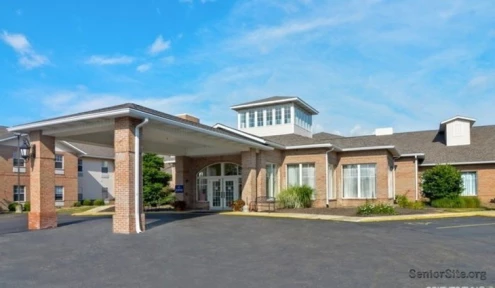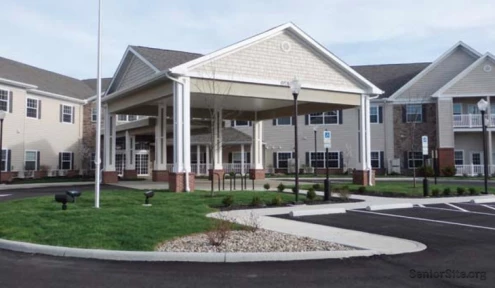The United States will have 98 million adults aged 65 and older by 2060, representing nearly 25% of the entire population.
Caring for aging parents is becoming more challenging as access to assistance programs remains difficult for many caregivers. A majority of Americans (51%) believe the government should pay for elder care, yet finding and accessing available programs continues to be a significant hurdle.
This guide outlines government assistance options for caregivers of elderly parents. It covers Medicare, Medicaid, Supplemental Security Income (SSI), and specialized caregiver support programs, providing step-by-step instructions to find, apply for, and manage benefits.
The information serves both new caregivers beginning their journey and experienced caregivers looking to maximize existing benefits. Each section addresses specific aspects of securing government support for elderly care responsibilities.
Step 1: Understand Your Role and Needs as a Caregiver
Securing government assistance for caregivers of elderly parents requires first understanding what kind of care the parent needs and whether the caregiver qualifies under official programs. This initial step ensures appropriate benefits application and maximizes available support.
Identify the type of care your parent needs
Caregivers should begin by observing changes in their parent’s daily functioning. Studies show family caregivers provide approximately 36 billion hours of unpaid caregiving valued at $600 billion. Key areas to evaluate include:
- Daily living activities: Independence in dressing, bathing, eating, and taking medications
- Home environment: Changes in cleanliness or organization
- Social engagement: Withdrawal from previously enjoyed activities
- Financial management: Timeliness of bill payments
- Physical changes: Unexplained weight loss or increased injuries
Professional needs assessments provide the most thorough evaluation when concerning changes appear. These assessments examine behavioral and cognitive condition, medical concerns, personal care needs, mobility level, and special support requirements. Most state Medicaid programs offer free assessments through their Comprehensive Assessment and Review for Long-Term Care Services (CARES) Program.
Determine if you qualify as a caregiver under federal or state programs
Federal programs typically recognize caregivers who provide assistance with health and well-being, everyday personal needs, and safety in the daily living environment. Qualification for most government assistance programs requires being at least 18 years old and meeting one of these relationship criteria:
- A spouse, child, parent, stepfamily member, or extended family member of the elderly person
- Someone living full-time with the elderly person (or willing to do so)
The Family Caregiver Support Program accepts adult family members providing care to individuals 60+ years old requiring assistance with daily activities, or to individuals of any age with Alzheimer’s disease. Older relatives (55+) caring for children under 18 or adults with disabilities may also qualify.
Documentation of caregiving responsibilities remains essential for most applications. Caregivers should contact their state’s Medicaid office since many states operate consumer-directed personal assistance programs that allow family members to become paid caregivers.
Step 2: Find the Right Government Programs
Finding appropriate government assistance programs requires knowledge of available resources and an understanding of what each offers. Once caregiving needs are identified, locating matching programs becomes the next essential step.
Use Benefits.gov and BenefitsCheckUp.org
BenefitsCheckUp.org serves as a free, confidential online tool from the National Council on Aging that helps older adults find benefits programs based on location. The resource asks specific questions to match users with appropriate benefits and provides applications for more than 50 different programs, including Medicare’s Extra Help and Medicare Savings Programs. Benefits.gov offers broader assistance options, helping identify federal, state, and private programs that save money on healthcare, food, prescriptions, and utilities.
Explore Medicare, Medicaid, and SSI options
Medicare pays for caregivers under specific circumstances – when a person is under a doctor’s care, certified as homebound, and receiving care through a written plan that the doctor regularly reviews. Medicaid provides more extensive caregiver support, with all states offering some type of consumer-directed personal care assistance program. This structure often allows family members to become paid caregivers through these programs.
Supplemental Security Income (SSI) provides monthly cash benefits for people who qualify due to limited income and resources or disability. While SSI doesn’t directly pay caregivers, recipients can use these funds to pay for care services, including family assistance.
Look into caregiver-specific programs like the National Family Caregiver Support Program
The National Family Caregiver Support Program (NFCSP), established in 2000, provides grants to states and territories to fund support for family caregivers. The program delivers five essential services:
- Information about available services
- Assistance accessing services
- Individual counseling, support groups, and caregiver training
- Respite care
- Supplemental services on a limited basis
Veterans’ families should explore the VA Caregiver Support Program, which includes both the Program of Comprehensive Assistance for Family Caregivers and the Program of General Caregiver Support Services.
Step 3: Prepare and Submit Applications
After identifying potential assistance programs, preparing a complete application package becomes the next critical task. Successful applications require attention to detail and proper documentation.
Gather required documents and financial records
Collecting necessary paperwork first saves time and prevents delays. Most government assistance programs require these essential documents:
- Medical records documenting the parent’s condition
- Financial information including income statements and tax documents
- Personal identification (birth certificates, Social Security cards)
- Power of attorney for healthcare and finances
- Detailed care needs assessment
- Veterans’ documents (DD-214) if applicable
The VA caregiver program specifically requires detailed information about the veteran’s injuries and the type of care provided. Caregivers should keep both digital and printed copies of all documents for quick access while protecting personal information.
Understand eligibility rules for each program
Program requirements vary significantly across assistance options. For Medicaid’s caregiver programs, California provides over $160 million in federal funding through local Area Agencies on Aging. Applicants must first verify if they meet relationship criteria – typically adult family members providing care to individuals 60+ years or those with Alzheimer’s disease qualify for the Family Caregiver Support Program.
For VA caregiver benefits, both veteran and caregiver must apply jointly. State programs often have different income thresholds and eligibility criteria, making consultation with the state’s Medicaid office about consumer-directed personal assistance programs essential.
Where and how to apply: online, in-person, or by phone
Most programs offer multiple application methods:
Online: The fastest option for many programs, including the VA caregiver program through va.gov.
By Mail: Send completed forms to program-specific addresses. For VA applications, mail to the Evidence Intake Center in Janesville, WI.
In Person: Visit your local Area Agency on Aging office or Medicaid office for immediate guidance. Community agencies can also assist with applications – for example, Aging & Long Term Care staff can help with online Medicaid applications.
Assistance with applications is often available through the Eldercare Locator (1-800-677-1116) or local Area Agency on Aging.
Step 4: Manage and Maximize Your Benefits
Securing government assistance represents only the beginning of the caregiver journey. Effective management becomes essential to maintain and maximize these benefits after initial approval.
Track renewal dates and reporting requirements
Staying on top of renewal deadlines prevents interruption in crucial services. Most government assistance programs require annual recertification to continue receiving benefits. Caregivers should create a calendar system with alerts set 60-90 days before renewal dates. Online renewals typically require:
- A credit/debit card for application fees (typically $35 for home care aide registrations)
- Updated documentation about changes in health conditions or living situations
- Recent financial records and income verification
Understanding reporting obligations remains equally important. Caregivers are legally required to report suspected elder abuse within specific timeframes—within 2 hours if serious bodily injury occurred or 24 hours for other cases. Failure to report can result in penalties up to $300,000.
Combine multiple programs for better support
Cross-sector partnerships provide more comprehensive care than relying on a single program. State agencies, health plans, community organizations, and Area Agencies on Aging often work separately but can create powerful support networks when combined. Strategic layering of multiple benefits allows caregivers to:
- Address different aspects of care (medical needs through Medicare, daily assistance through Medicaid)
- Use environmental scans to identify effective programs and service gaps
- Conduct regular meetings with support teams to ensure accountability and collaboration
Seek help from local Area Agencies on Aging
Area Agencies on Aging (AAAs) serve as invaluable resources for managing benefits effectively. These organizations coordinate services that help older adults remain independent at home. All 28 AAAs provide targeted assistance including:
- Information, referral and assistance services
- Care coordination between different providers
- Caregiver support services and workshops
- Benefits counseling to maximize available programs
AAAs particularly focus on elderly individuals with greatest economic and social needs, especially those with low incomes, minorities, and those in rural areas. Caregivers can connect with their local AAA by calling 1-800-252-9240.
Conclusion
Navigating government assistance programs for elderly parent care demands dedication and careful planning. Success ultimately depends on consistent management and optimization of benefits after identifying available programs and completing necessary applications.
Combining multiple support programs creates the strongest safety net for most caregivers. Local Area Agencies on Aging offer regular check-ins to ensure effective use of available resources while maintaining compliance with program requirements.
Caregiving responsibilities frequently change as parents age. Adapting to these changes becomes easier when caregivers stay informed about program updates and maintain accurate documentation. Proper planning and resource management allow for better care of elderly parents while protecting the caregiver’s financial well-being.
The foundation for long-term caregiving success starts with thorough needs assessment, followed by strategic program selection and careful documentation. Taking these steps today prepares caregivers for tomorrow’s challenges in providing effective elder care.
FAQs
Q1. What types of government assistance are available for caregivers of elderly parents? There are several types of government assistance available, including Medicare, Medicaid, Supplemental Security Income (SSI), and caregiver-specific programs like the National Family Caregiver Support Program. These programs can provide financial support, respite care, and other services to help caregivers manage their responsibilities.
Q2. How do I determine if I qualify as a caregiver for government assistance programs? To qualify for most government assistance programs, you must be at least 18 years old and have a specific relationship with the elderly person, such as being a spouse, child, parent, or extended family member. Some programs also recognize non-family members who live full-time with the elderly person. It’s best to check with specific programs for their exact eligibility criteria.
Q3. What documents do I need to apply for caregiver assistance programs? Typically, you’ll need to gather medical records documenting your parent’s condition, financial information including income statements and tax documents, personal identification, power of attorney documents, a detailed care needs assessment, and veterans’ documents if applicable. It’s important to keep both digital and printed copies of all documents.
Q4. Can I get paid for taking care of my elderly parent? Yes, in some cases. Many states operate consumer-directed personal assistance programs through Medicaid that allow family members to become paid caregivers. Additionally, some veterans’ programs offer stipends to family caregivers. The specific options and eligibility requirements vary by state and program.
Q5. How can Area Agencies on Aging help caregivers manage their benefits? Area Agencies on Aging (AAAs) are valuable resources for caregivers. They provide information and referral services, care coordination, caregiver support services, and benefits counseling. AAAs can help you understand and maximize the benefits available to you, connect you with local resources, and offer workshops and support groups for caregivers.












